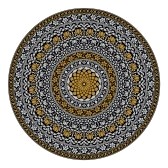 |
American Literature: Romanticism Sample Final Exams 2013 final exam assignment mid-length essay: semester review |
 |
Jennifer Tapp
What I learned…
I have taken literature courses in the past, but for the most
part, the courses dealt more with a specific time period than with a writing
style. I learned about different time periods from the earliest recorded written
works to the more modern works, but they were all studied in reference to the
time period they came from. Each text I read was dissected with the intention of
determining what the historical significance of the piece was in reference to
the events occurring simultaneously with the author.
In the American Romanticism course, I
read and re-read texts while focusing completely on the context of the text, and
not really trying to define the text by the external history or time period.
Time periods were considered in the course, but more as an arrangement of the
works and authors in a chronological manner identifying who wrote what first, in
order to see the progression of the romanticism style.
I have read several of these stories and authors such as Poe,
Hawthorne, Dickinson and Fitzgerald, but the emphasis has always been on
cultural context. I recall reading The
Great Gatsby by F. Scott Fitzgerald and being asked to identify the cultural
context of the story, relating it to the cultural mores of the 1920’s. I
remember learning about prohibition was promoted in cities and how it liquor
sales went underground, flappers and bobbed haircuts on girls. I would then have
to show how those societal or historical ideas were reflected in the story. In
American Romanticism, however, I was able to take the work at face value and
read Fitzgerald’s Winter Dreams,
looking only for how the author achieved the story objective. I could see the
Romanticism in the romance between Dexter and Judy. I could identify the
significance of Dexter’s journey into adulthood, without the concern about what
would have been happening in the real world parallel to the character.
The course was also laid out in a chronological manner which
allowed for the arrangement of the stories and poems to be in a comfortable
progression. By that I mean, it was easy to see the characteristics of the style
grow and change over time as we read selection beginning with an earlier
publication date to a later publication date. Writing styles have to evolve over
time, or else they will be discarded when they no longer fill a cultural or
societal need. Even the placement of the Midterm for the course balanced the
time periods well, and assisted in my evaluation of the different perspectives.
The core components of a specific writing style may not
change, but the application and emphasis on the core component will. For example
the earlier works we read in class showed the long journey of the hero
character, depicting the physical environment and the nature around the
individual. In Mary Rowlandson’s
Narrative of Captivity, the progression of Mary’s journey is highlighted by
changing seasons and by the surrounding environment as she travels with her
captors. The earlier works showed passage of time through environmental changes,
while in the later selections, a show the progression of a journey or the
passage of time as less of the environment changing as the character changing
and growing such as in F. Scott Fitzgerald’s
Winter Dreams, the journey of the
main male character, Dexter, is not framed by nature and seasons so much as by
internal considerations and the maturity that comes from aging. Dexter does not
track his journey by the change of the seasons, although he is aware of them, he
tracks his journey by his accomplishments.
This course taught me to view these literature selections from a different perspective. I was not confined to viewing them from the historical or cultural context the pieces were written in but by the merits of the writing style. The arrangement of the class also enabled me to see the progression of the writing style as it changed over time to reflect the wants and need of the authors and readers. My changing focus on perspectives even gave me an idea for the final project which was about the sustainability of Romanticism when coupled with realism. I eventually chose to focus more on the perspective of changing gender roles in American realism but my changing perspective was still the driving force.
|
|
|
|


